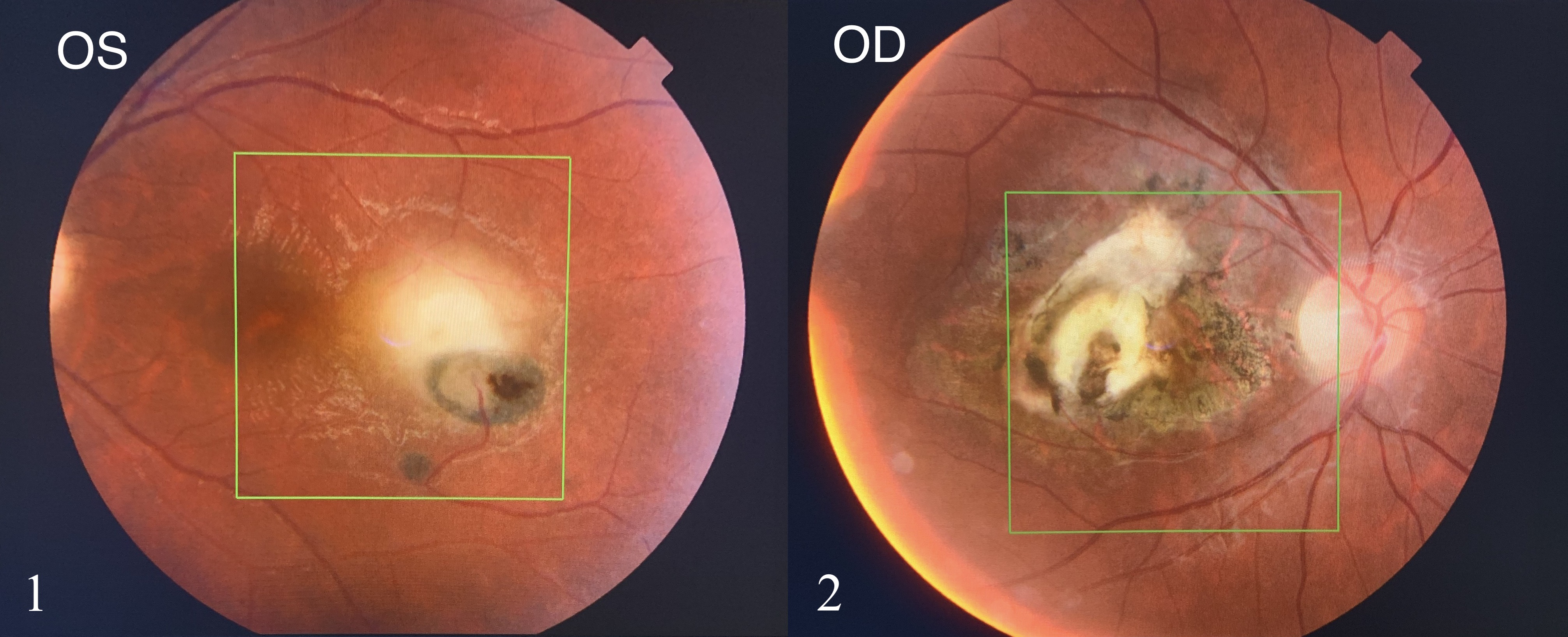Ocular Toxocariasis
Image Description
A 14 years old boy presented with impaired vision in both eyes, for about 1 month. His best corrected visual acuity in the right eye was 6/60, in the left eye - 6/12 on Snellen chart. Slit lamp examination revealed a normal anterior pole in both eyes. Right eye fundoscopy showed a two disc diameter-sized yellow-white granuloma in the macular and perimacular zone, with massive chorioretinal scarring, with no vitreoretinal traction (Figure 2). Left eye fundoscopy revealed a smaller white-yellow perimacular granuloma, of about one and a half disc diameter-sized granuloma with two perimacular chorioretinal scars, specific to parasitic uveitis (Figure 1) . No other systemic clinical features were associated. Serology was positive for Toxocara Canis, with detectable antibodies to Toxocara Canis, hypergammaglobulinaemia, especially IgE, and eosinophilia.
Toxocariasis is caused by ingestion of food or soil contaminated with ova shed in canine faeces. After ingestion, ova develop into larvae, that can travel to other organs like liver, skin, lungs and eyes, causing inflammation (1). Treatment requires administration of topical and systemic steroids, and anthelminthic agents, such as Mebendazole and Thiabendazole. Worm death can cause additional inflammation. Vitrectomy might be considered if tractional sequelae occur. Complications may include tractional retinal or ciliary body detachment with associated hypotonia that can lead to phthisis bulbi. Also, the visual prognosis is often poor (2).
References
(1) Bowling B, Kanski’s Clinical Ophthalmology, 2016, ELSEVIER, pp 432,433
(2)Agudelo C, Villareal E, Cáceres E, López C, Eljach J, Ramírez N, et al. Human and dogs Toxocara canis infection in a poor neighbourhood in Bogota. Memórias do Instituto Oswaldo Cruz.


